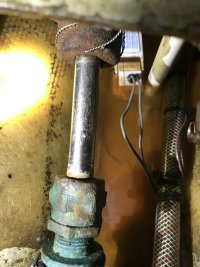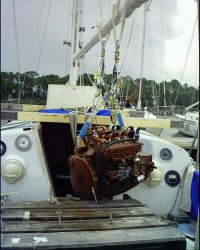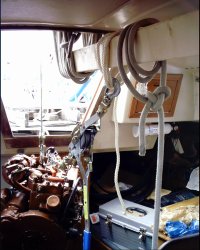LeifThor
Member III
1972 E35-2 with lead encapsulated keel, and Atomic 4 engine in good working condition.
My model is where the engine is mounted in cabin, under seatee/lounge right over the deepest part of the bilge. Boat is in a slip on the ocean.
PROBLEM: in preparation to paint bilge, I removed all water in the bilge which I thought was built up from leaking packing (which is normal). Cleaned completely wiped down with acetone, and then noticed along one side of the bottom of the bilge, water coming in from the bone dry bilge at around 1 drop per 3-4 seconds coming up out of nowhere.
tried patching area with Splashzone with no success as the water is coming in.
I am guessing it’s a coming from the keel, or from a pinhole breach in the hull.
In addition the water is orangish in color and slightly orange
How can I find the source of the leak? Any ideas anyone, especially if you’ve experienced this issue.
My model is where the engine is mounted in cabin, under seatee/lounge right over the deepest part of the bilge. Boat is in a slip on the ocean.
PROBLEM: in preparation to paint bilge, I removed all water in the bilge which I thought was built up from leaking packing (which is normal). Cleaned completely wiped down with acetone, and then noticed along one side of the bottom of the bilge, water coming in from the bone dry bilge at around 1 drop per 3-4 seconds coming up out of nowhere.
tried patching area with Splashzone with no success as the water is coming in.
I am guessing it’s a coming from the keel, or from a pinhole breach in the hull.
In addition the water is orangish in color and slightly orange
How can I find the source of the leak? Any ideas anyone, especially if you’ve experienced this issue.



